


Why is My Male Cat Attacking Female Cat? How To Stop?
December 29, 2023


Why does my dog keep putting its puppy in the mouth? 8 Reasons
December 30, 2023Cats are fascinating creatures with various behaviors that can sometimes puzzle their owners. One such behavior is when a cat bites and humps their owner’s arm. While this might seem strange or even concerning, it’s a common behavior among felines.
This article will explore why cats might exhibit this behavior and what it means. Understanding this can help cat owners better connect with their furry friends.
But first, here’s a quick answer:
In its simplest form, redirected sexual frustration can result in your cat biting and humping your arm. This behavior is more commonly observed in cats that aren’t neutered or spayed. Additionally, your cat might engage in this behavior as a form of playfulness, to demonstrate dominance, or due to compulsive disorders.
The Science Behind Humping In Cats
Humping behavior in cats can be interpreted through several scientific visions. From a reproductive viewpoint, it is often hormonally driven, especially in non-neutered males and females experiencing estrus.
This behavior is a natural part of the mating process. While neutering or spaying typically reduces such actions, they might not completely stop, as mounting can occur for non-reproductive reasons.
In terms of social and behavioral aspects, mounting in cats can be a nuanced method of communication. In homes with multiple cats, it can serve to establish or uphold social order.
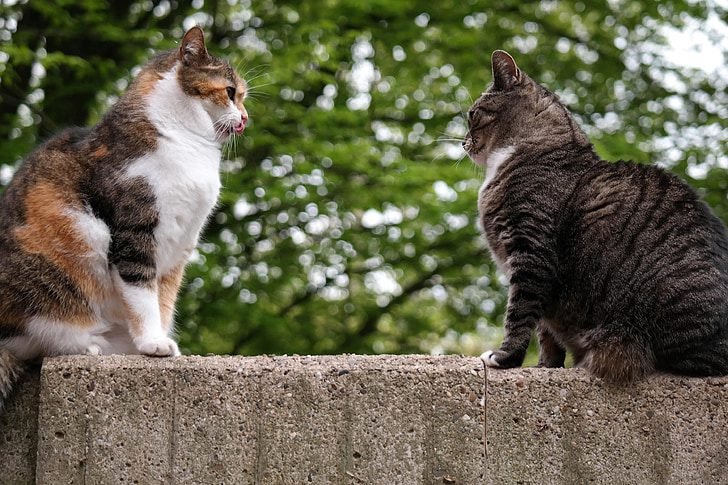

Additionally, it may be a reaction to stress, excitement, or an unfamiliar or unsettling environment. It can also become a learned behavior, reinforced by human responses, shifting from an instinctual action to a learned one.
Moreover, various health issues could also lead to mounting behavior in cats. Neurological problems, urinary tract infections, or general discomfort may cause a cat to mount objects or other animals.
Evaluating each cat’s unique health status, social surroundings, and overall circumstances is crucial in understanding and addressing this complex behavior.
Related Read: Why is My Male Cat Attacking Female Cat? How To Stop?
Reasons Behind Cat Biting And Humping Arm Behavior
Here are the primary reasons why you might notice your cat biting and humping your arm:
1: Your cat is sexually frustrated
The action of your cat humping and biting your arm can be signs of redirected sexual tension. This behavior is especially dominant in male cats that haven’t been neutered, where the desire to mate, fueled by testosterone, is misdirected towards inanimate objects or parts of the human body, like arms.
Mating rituals frequently involve biting in their natural habitat, which can translate into similar behaviors in a domestic setting. When your cat exhibits these behaviors, it’s likely acting on a basic instinct, with your arm serving as a stand-in for a mating companion.
2: Your cat is just being playful
Cats are naturally playful animals, and their playtime often resembles hunting activities. Biting and humping can be elements of this active behavior.
Your cat might perceive your arm as a plaything or prey, leading to a pretend skirmish. While this behavior might appear aggressive from a human perspective, it’s a typical playful activity for cats.
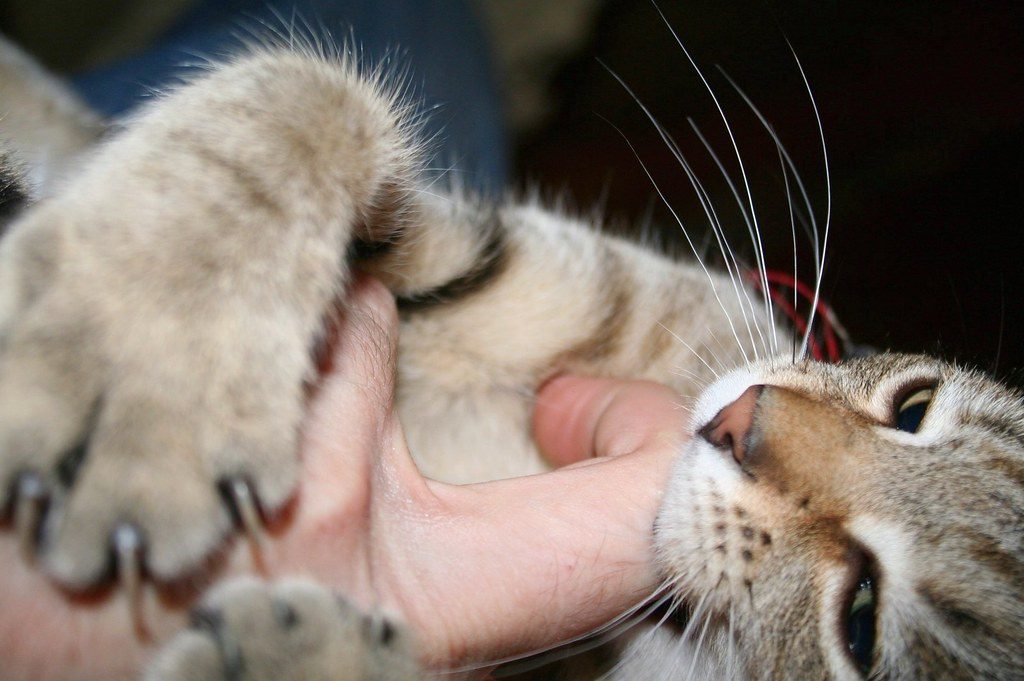

Cat Playful Behaviour
This behavior allows them to express their hunting instincts, exercise their muscles, and interact with their surroundings, sometimes involving parts of the human body.
3: The cat is being dominant
In the feline world, actions like humping and biting can serve as displays of dominance. These behaviors are more than mere random acts; they can be integral to the intricate social structure of cats.
Your cat may be using these actions to assert its position in the family pecking order, whether with humans or other pets. Such dominant behavior can often be traced to the cat’s previous experiences, breed characteristics, or individual personality quirks.
Although this might appear odd or even discomforting to human observers, it’s a typical method for cats to express themselves in their surroundings.
4: Your cat is trying to seek your attention
Cats often learn that specific behaviors elicit immediate responses from their owners. If your cat has noticed that biting and humping draw your attention, it might repeat these actions to get noticed again.
Your cat may not discern between positive and negative attention, only understanding that such behaviors lead to interaction with you. This recognition can reinforce the behavior, making it a regular method for your cat to signal its wish for exchange.
5: Your cat is stressed out
Physical actions such as biting or humping can be signs of stress or anxiety in cats. Environmental changes, new family members (humans or pets), or shifts in their usual routine can provoke stress in felines.
This stress can prompt them to engage in comforting or familiar behaviors.
These behaviors may appear unusual to humans, but cats can act as coping strategies, helping them deal with unease or nervousness.
6: Your cat is just bored
When cats experience a lack of mental and physical stimulation, they may become bored, leading to atypical behaviors such as biting or humping your arm.
Cats, being smart and curious, need consistent engagement. Without adequate stimulation, they might invent their forms of amusement, resulting in these odd behaviors.
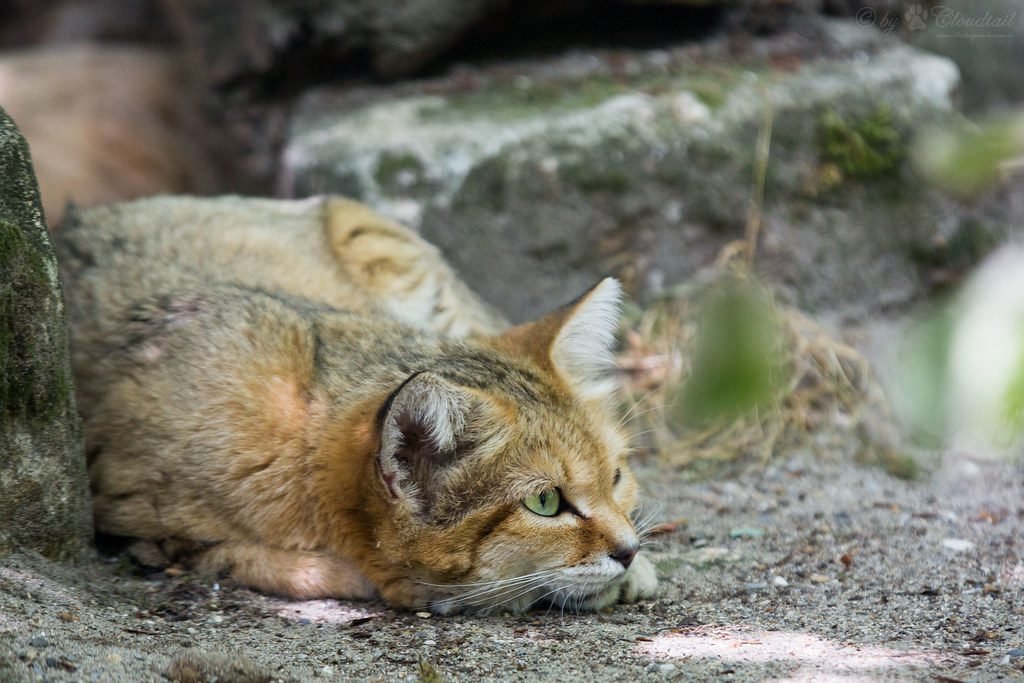

Bored Cat
In this scenario, your arm could become the target of their self-directed play, serving as a means for them to satisfy their need for interaction and activity.
Editor’s Pick: Why Do Birds Attack Cats? Understanding and Prevention
7: Your cat might have a medical issue
Sudden changes in your cat’s behavior could indicate health-related issues. Conditions such as urinary tract infections or neurological disorders might present themselves with behaviors like biting or humping.


Underlying Medical Conditions in Cats
In these cases, what appears to be a behavioral problem may indicate a deeper medical issue.
Furthermore, if your cat has recently had surgery, it may engage in humping as a way to find comfort or alleviate any pain and discomfort.
How To Prevent Your Cat From Biting And Humping Your Arm?
Dealing with your cat’s biting and humping can be challenging as these behaviors may stem from various causes like stress, playful instincts, or health issues.
While natural, these behaviors can be troublesome if directed towards you. Here are seven strategies to help manage these actions:
1: Engage with Toys and Interactive Play
Provide your cat with stimulating toys and engage in interactive play to channel biting and humping tendencies. Toys that mimic prey, like feather wands or plush toys, can satisfy their hunting instincts.
Regular playtimes with these toys can divert their attention from your arm and help prevent boredom.
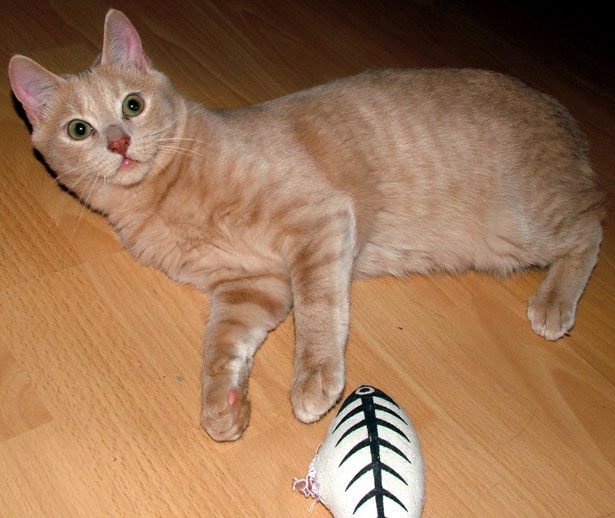

2: Avoid Punishment
Instead of physical punishment, which can worsen biting and humping due to increased stress or aggression, try calmly withdrawing from the situation or redirecting the behavior.
Brief timeouts in a safe space can signal to your cat that the behavior is unwanted. Gentle and consistent guidance is typically more effective than punitive measures.
3: Positive Training and Reinforcement
Use positive reinforcement to discourage biting and humping. Redirect your cat to appropriate items when they display these behaviors, and reward them when they follow suit.
A firm yet calm voice can express disapproval. Consistent reinforcement of positive behavior, coupled with ignoring or redirecting unwanted actions, is crucial for lasting change.
4: Enrich the Environment
Enhance your cat’s surroundings with climbing areas, scratching posts, and hiding places to alleviate boredom, a key trigger for biting and humping.
A stimulating environment with various activities can help your cat channel its energy appropriately and reduce these behaviors.
5: Seek Professional Advice
If health-related issues might be behind your cat’s behavior, consult a veterinarian for a comprehensive check-up. Hormonal imbalances or undiagnosed medical conditions could be at play.
A vet can complete an assessment and suggest treatment plans, dietary changes, or lifestyle modifications.
6: Create a Routine
Establishing a consistent daily routine can provide a sense of security for your cat, reducing stress-related behaviors. Regular feeding times, play sessions, and quiet times can create a stable environment, making your cat feel more relaxed and less likely to exhibit these behaviors.
By implementing these strategies, you can effectively manage and reduce your cat’s biting and humping behavior, enhancing your bond and ensuring a harmonious coexistence.
7: Neutering or Spaying
Consider this option if your cat still needs to be neutered or spayed. These procedures can significantly reduce behaviors driven by reproductive instincts, such as biting and humping.
Consult with your veterinarian about the best time and approach for these procedures.
What To Do When Your Cat Bites You?
If bitten by your cat, reevaluate your interaction style or seek professional advice for behavior modification. Contact animal control or a vet for bites from an unknown cat, especially one showing aggression or potential rabies symptoms.
Clean minor bites with soap and water, and apply antibiotic ointment. Seek medical attention for severe wounds. Monitor for infection signs like swelling or redness, and consult a doctor if these occur. Establishing positive behaviors with your pet can prevent future incidents.
Can I Let My Cat Hump My Arm?
It’s not recommended to allow your cat to hump your arm, as it could signify dominance or other behavioral issues. Allowing it might unintentionally reinforce improper behavior, potentially affecting interactions with others.
Instead, when your cat begins this behavior, redirect its focus or gently move it aside. A neutral response from you helps to discourage the action without reinforcing it. Your consistent behavior will teach your cat about acceptable activities.
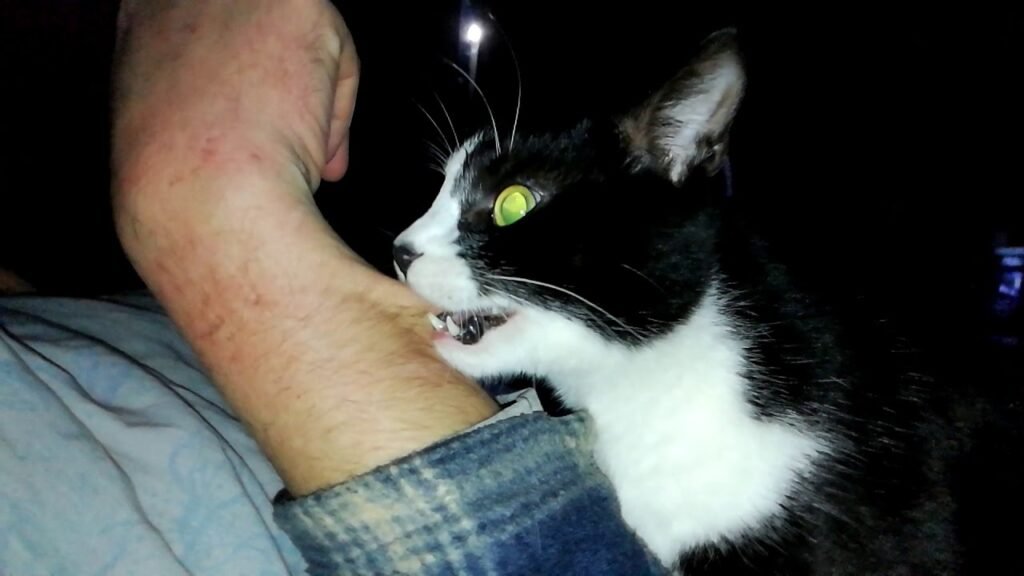

Can I Let My Cat Hump My Arm?
If the behavior continues or you find it challenging to manage, seeking advice from a veterinarian or an animal behavior expert is advisable. They can offer tailored guidance for your cat, helping to foster a comfortable and respectful bond between you and your pet.
Why does my neutered cat continue to Hump?
Even after neutering, cats may still exhibit mounting behaviors for reasons other than sexual instincts. These can include habits formed before neutering, dominance, stress relief, or simply as a playful action.
Neutering often reduces such behaviors but doesn’t always eliminate them, especially if ingrained as a habit or form of communication.
Is my male cat attempting to mate when he humps me?
Your male cat humping you is not necessarily an attempt to mate, especially if he’s been neutered. Various factors, including playfulness, dominance, or stress can drive this behavior. It’s a way for your cat to express certain emotions or instincts rather than a direct mating effort.
Do cats typically outgrow the tendency to bite and hump as they mature?
Cats may outgrow biting and humping behaviors as they age, mainly if these actions are linked to kitten playfulness or young age. However, if these behaviors are deeply ingrained or are responses to stress or environmental factors, they might persist into adulthood.
Consistent training and providing appropriate outlets for play can help reduce these behaviors over time.
Conclusion
Navigating the peculiar behaviors of a cat that bites and humps your arm might initially seem difficult, but practical solutions are available. Committing to appropriate strategies can enhance your relationship with your furry companions.
Dedicating time to training and offering alternative ways for your cat to expend energy can significantly impact you. Whether it involves providing suitable toys, setting clear boundaries, or seeking expert guidance, achieving a content and well-behaved pet is achievable. Your cat’s happiness and your peace of mind are well worth the effort.
In summary, your cat’s biting and humping behaviors can be addressed with determination and a thoughtful approach. Embrace the journey, knowing that the satisfaction of a happy and well-adjusted cat awaits you.



